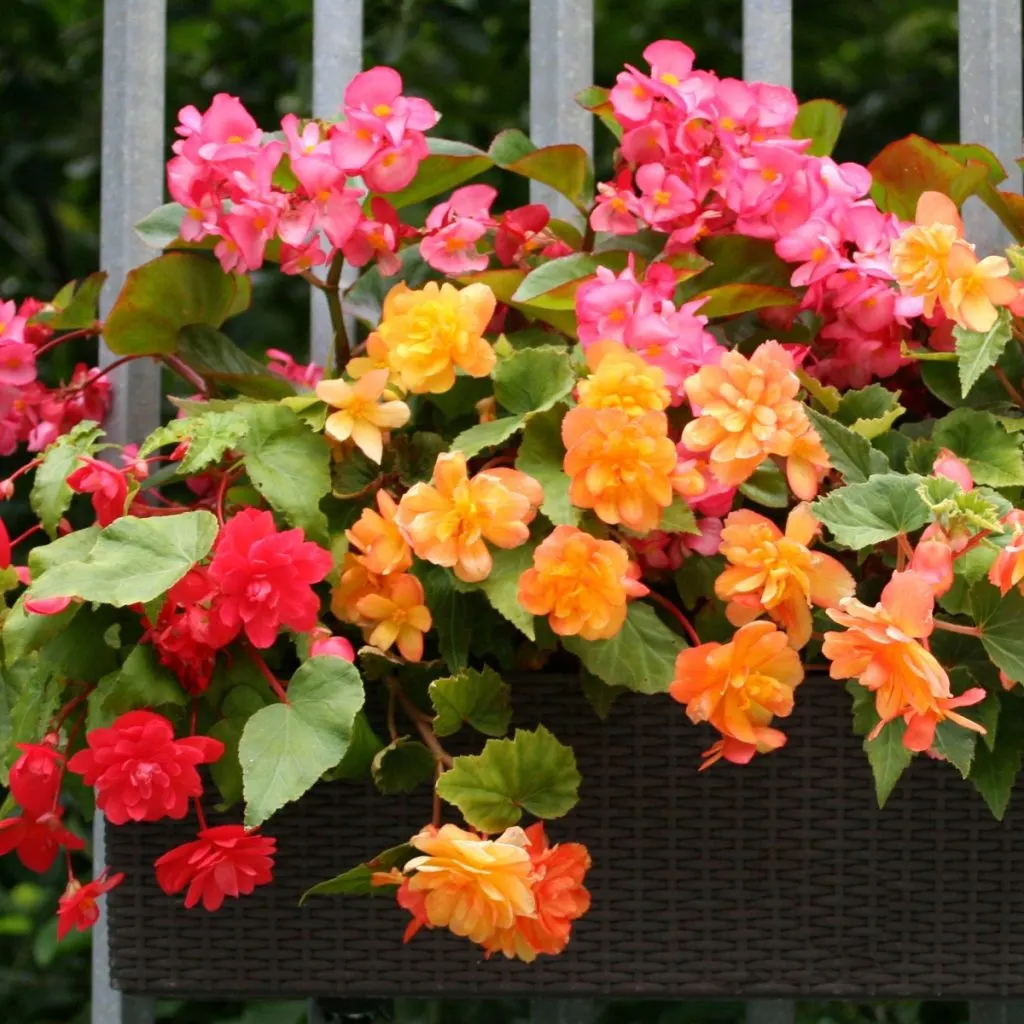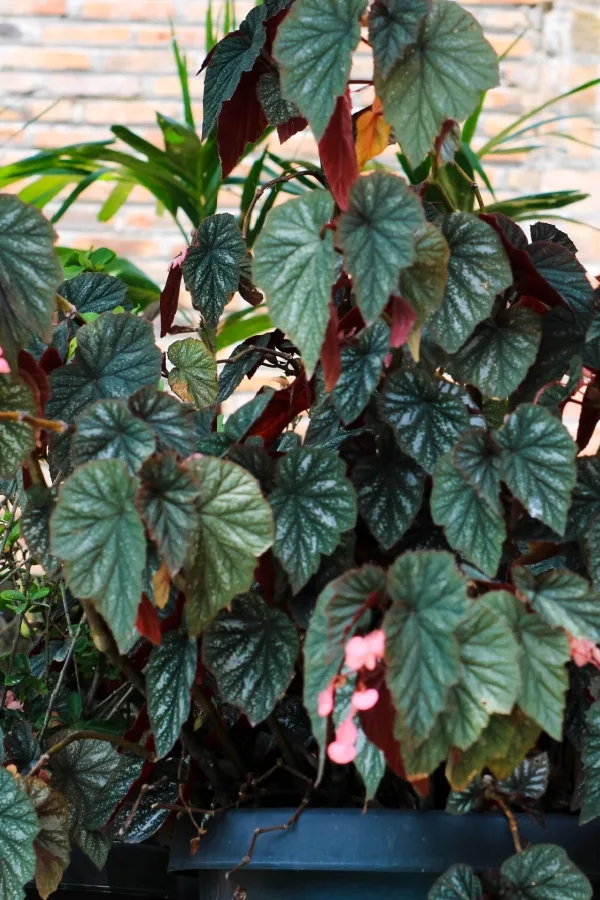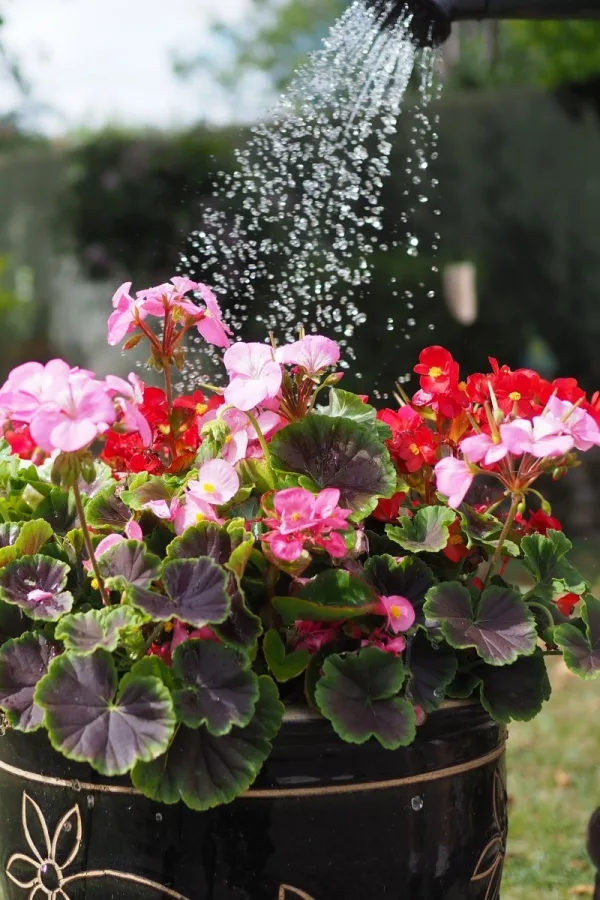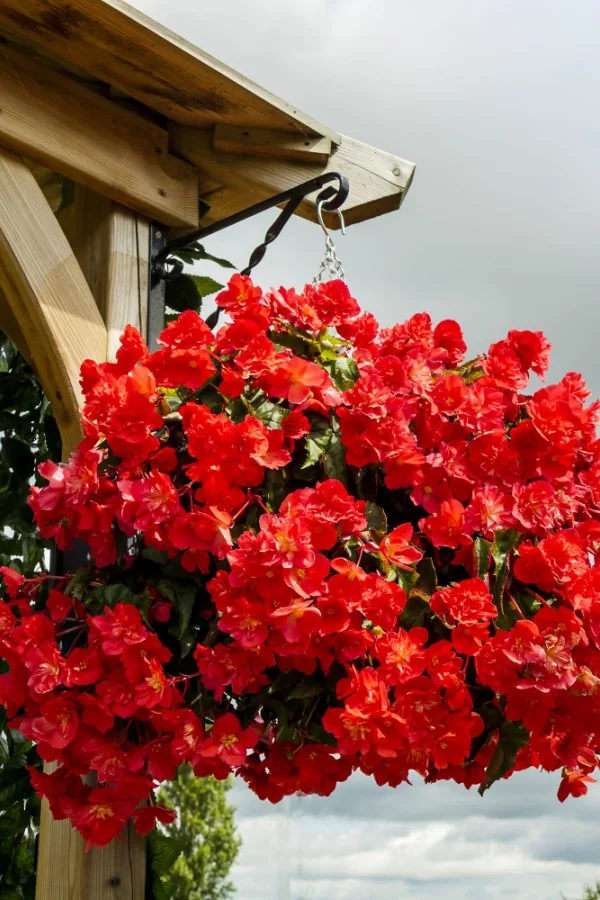Looking for a few quick tips and tricks on how to best fertilize your begonias this summer to keep them full of life and loaded with big blooms all the way to late fall?
Begonias are a classic flowering annual that are often grown for their colorful foliage and ultra-bright blooms. In recent years, they have seen a new interest in popularity, especially with all of the new foliage and blooming varieties that are now on the market.
What makes begonias even better is that they can really take the heat – literally! Begonias thrive in warmer locations and will continue to push out blooms in both sunny or shady locations – as long of course as they get the energy and moisture they need for flowering. And that is exactly what today’s article is all about!

How To Fertilize Begonias In The Summer For Big Blooms
Giving Your Begonias The Flower Power They Need
No matter whether you grow begonias in your flowerbeds, containers or in hanging baskets – they are going to use up the nutrients in the soil. And without replenishing those nutrients, eventually, the plants will start to suffer.
Often, the first part of a begonia plant to show signs of a struggle are the blooms. Begonias, as with most flowering annuals, require a lot of special nutrients in order to set and maintain blooms. And if the plants get stressed or there is a reduction of available energy, the blooms are the first to go.
This is exactly where fertilizing your begonias on a regular schedule can save the day. But when it comes to powering more blooms, that fertilizer needs to contain the specific nutrients begonias need most for flowering.
What To Use To Fertilize Begonias – Getting Begonias To Bloom Big
To produce the most begonia blooms possible, the trick is to use a low dose of fertilizer but apply it more frequently. The time between applications depends on whether you are growing them in pots and containers – or if they are in flowerbeds.
For hanging baskets, pots, and containers, provide plants with a low dose every seven to ten days. For those in flowerbeds, you can stretch the dosing out to once every two to three weeks.

For begonias, it’s best to use an all-purpose granular fertilizer. Why granular? Because begonias can suffer from getting too many nutrients too fast. A slow release granular type will avoid that issue. In addition, the foliage of begonias is more easily damaged by liquid fertilizer than most other annuals.
Finally, when looking for a granular fertilizer, select one with a higher percentage of phosphorus than nitrogen or potassium. This helps to promote bloom production as opposed to foliage growth. Affiliate Product Link: Schultz KNOX High Phosphorous Granule Plant Food
In addition, applying worm castings around the base of each plant monthly can really help begonias stay energized over the long haul. Worm castings are an excellent, 100% organic, and natural fertilizer.

When placed around the stem of plants, each time it rains or you water plants, the nutrients are leached down into the soil. The roots can easily absorb the extra boost of nutrients and convert it into energy.
When using castings, it’s important to still provide plants with a low dose of liquid fertilizer as well. The castings will help greatly with overall health, but not specifically blooming. Affiliate Product Link: 100% Worm Castings
Proper Watering – How To Fertilize Begonias For More Blooms
In order for begonias to be able to absorb the fertilizers properly, they also need moist soil. While roots that are too dry are a big cause for concern, overwatered plants will end up with swollen roots that will struggle to take in nutrients as well. The key is to get the perfect balance.
Begonias grow tuberous roots that need about an inch of rainwater or hand watering in order to stay healthy. This usually winds up being about one to two good rainfalls each week.
For begonias growing in containers or hanging baskets, allow the soil to dry out in between waterings. This helps prevent roots from being over-saturated and rotting. To check the moisture levels, use an index finger and reach down deep into the soil. If it is dry to the touch, it’s time to water.

Don’t be surprised if you have to water container begonias every day. This is especially the case during particularly hot and dry spells. Waiting too long between waterings will result in a large reduction of blooms.
For both container plants and those growing in flowerbeds, water plants early in the morning for best results. This helps the plants dry out a bit before the worst heat of the day arrives. Avoid watering overhead when possible to help prevent mildew issues.
Deadhead And Prune For More Blooms – Fertilize Begonias
Begonias have a tendency to become leggy over time. To help maintain their shape and keep plants healthier, pruning back every four to six weeks is ideal. Pruning will also encourage plants to produce new growth at the point of the cut. Additional growth equals even more blooms per plant.
Deadheading – which is removing spent or dead blooms – will also help immensely to promote additional blooms. Even though the spent blooms are on their way out, the plant will continue to spend its energy and resources attempting to “fix” the blooms.

If too many blooms are left on the plant, it will slow down its production of new blooms. Removing them allows the plants to focus that energy instead on producing new blooms. See: How To Deadhead Annual & Perennial Flowers
You do not need pruners or special tools to do this task as the stems break off quite easily. Just use your fingers to snap off the spent blooms or stems. Between providing plants with the proper fertilizer, watering them often and keeping plants pruned and deadheaded, you will be able to enjoy stunning begonia blooms all summer long!
This Is My Garden
Follow Our Facebook Page For Great Gardening Tips And Advice! This Is My Garden Facebook Page
This Is My Garden is a garden website created by gardeners, for gardeners. Jim and Mary Competti have been writing gardening, DIY and recipe articles and books and speaking for over 15 years from their 46 acre Ohio farm. They publish three articles every week, 52 weeks a year. Sign up today to follow via email, or follow along!
